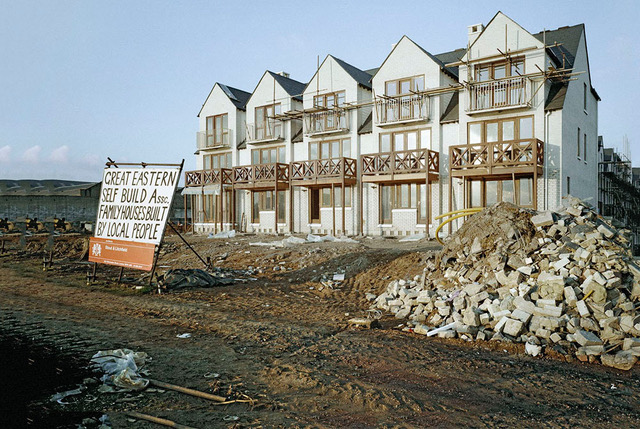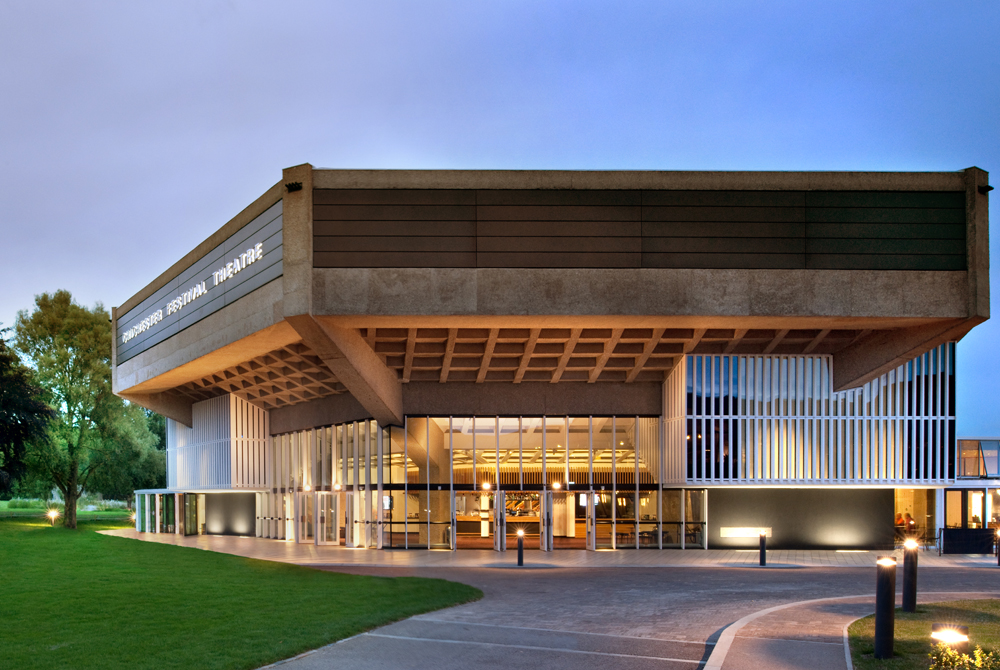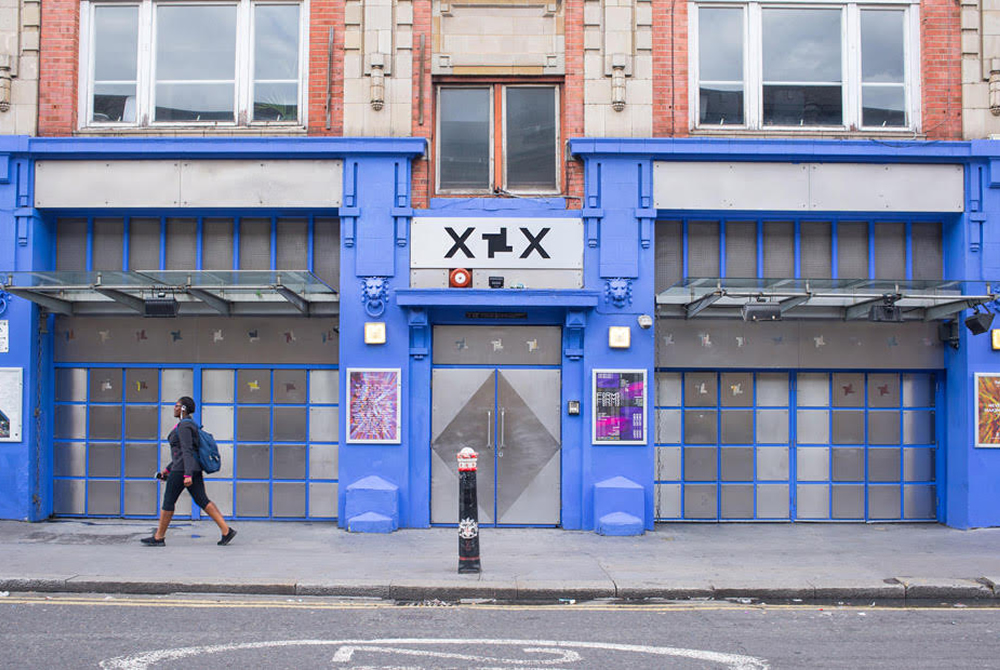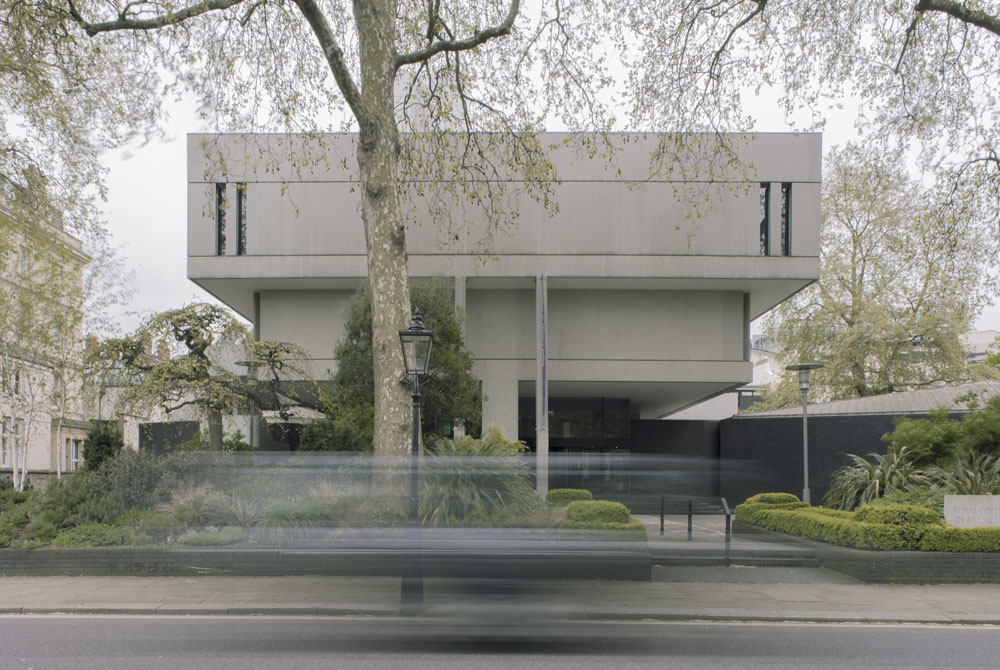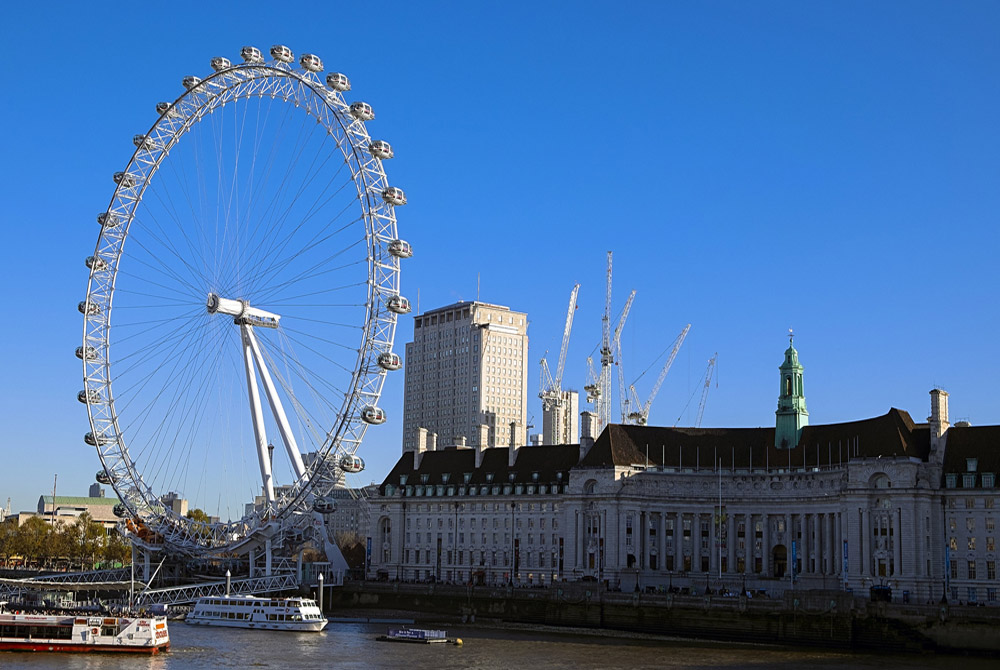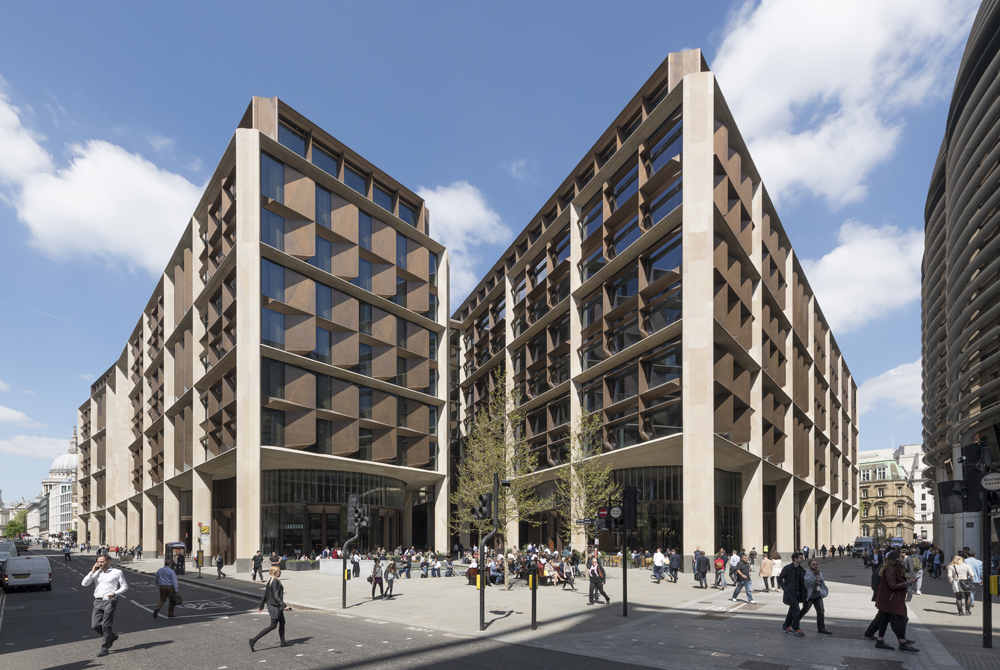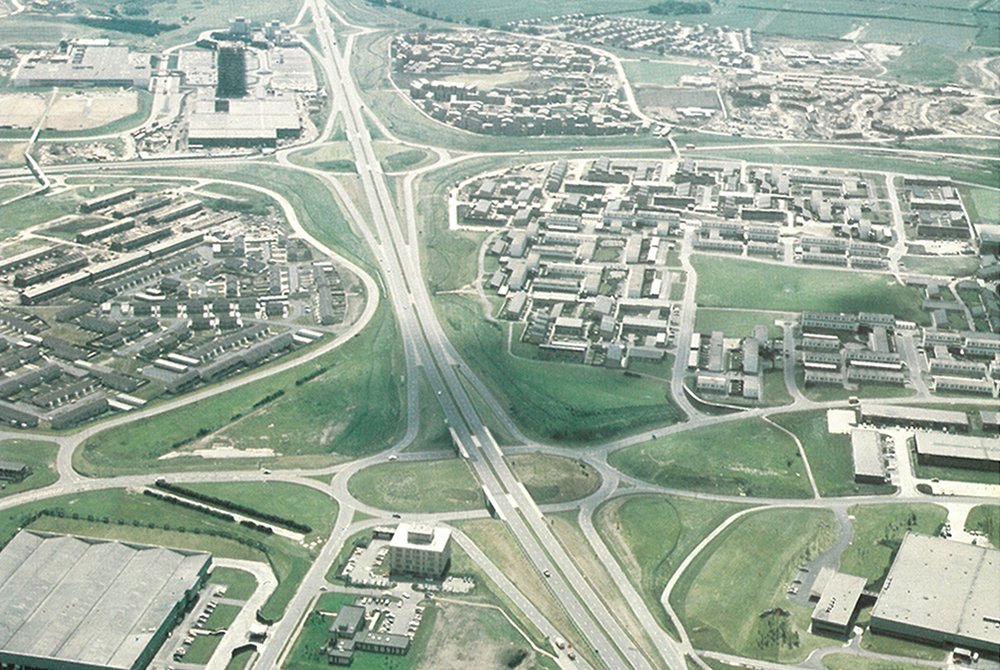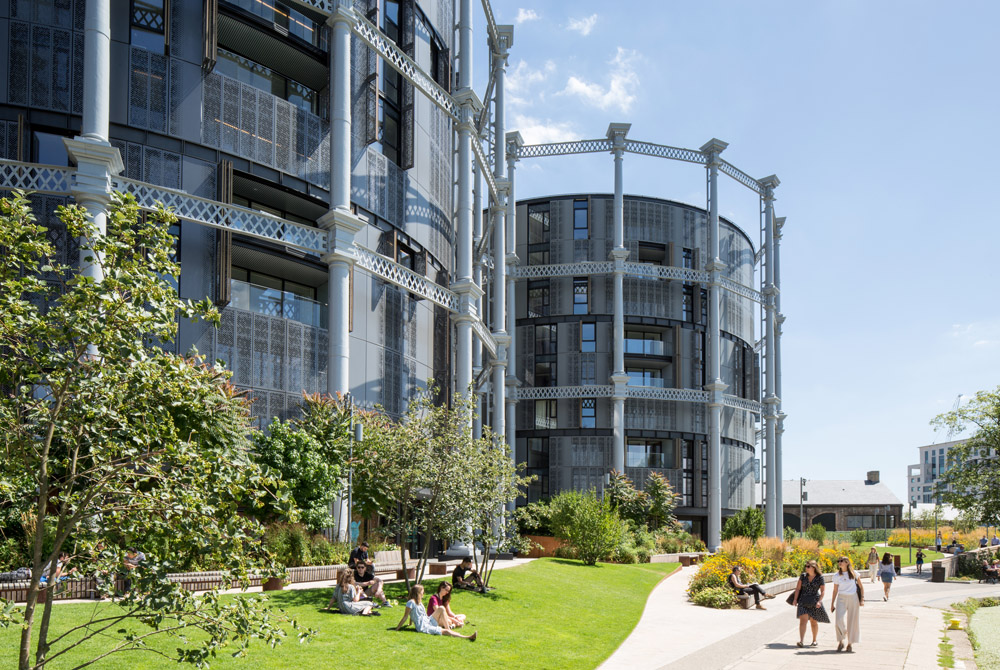My husband, a hospital doctor called Michael Barraclough, had a record of building his own homes – from a two- windowed, one-doored little house when he was boy of eleven in India to, in 1979, a large house on the river in the Isle of Dogs, looking directly across at the beautiful Royal Naval College in Greenwich.
In 1986 he was disappointed that local people on the Isle of Dogs were largely left out of the new housing boom on the Isle of Dogs, and decided to help them build their own houses. We leafleted most of the big tower blocks and called a meeting. No one came. We were after all outsiders, and they were ‘islanders’.
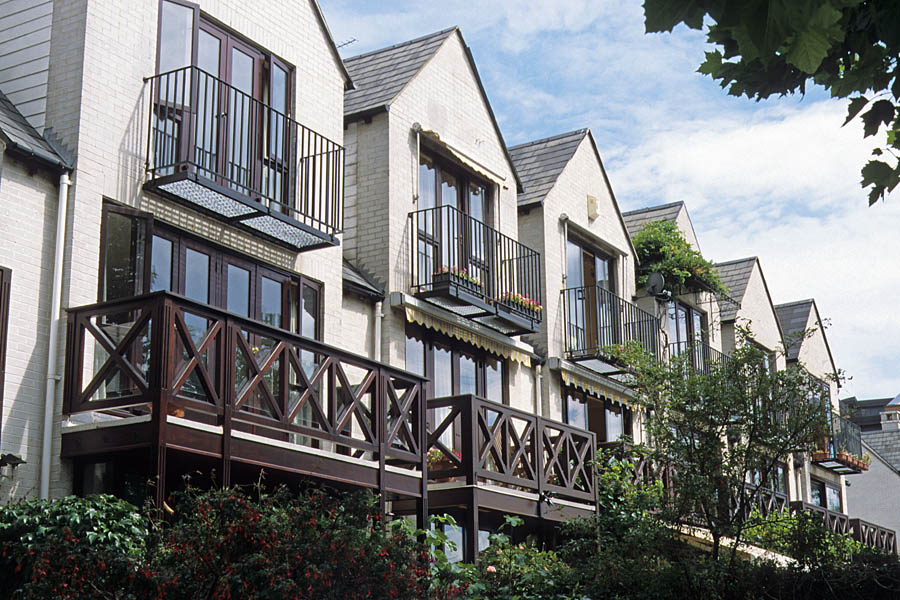 The completed houses of the Great Eastern Association
The completed houses of the Great Eastern Association
We wised up a bit, got a couple of local leaders on side and the next meeting in our house was pretty full. It resulted in the creation of the 46-member Great Eastern self- build community. The first piece of land they were offered by the LDDC was a miserable chunk sandwiched between derelict industrial sites and nowhere near the river. Michael pointed out his members had all given their lives to working in the docks or on the river and if anyone deserved to live on the river they did. Happily, he won.
He took the members of the self-build group to see the work of three good architects and they chose Stout and Litchfield, who had also designed our house in Ferry Street. He also finally found a very reluctant bank to back 45 builders with no capital.
The builders were almost all dockers. They worked hard when they were free at weekends, 10-hour days in the summer, 8 in autumn, six in winter. Some who were professional tradesmen were paid to work all week.
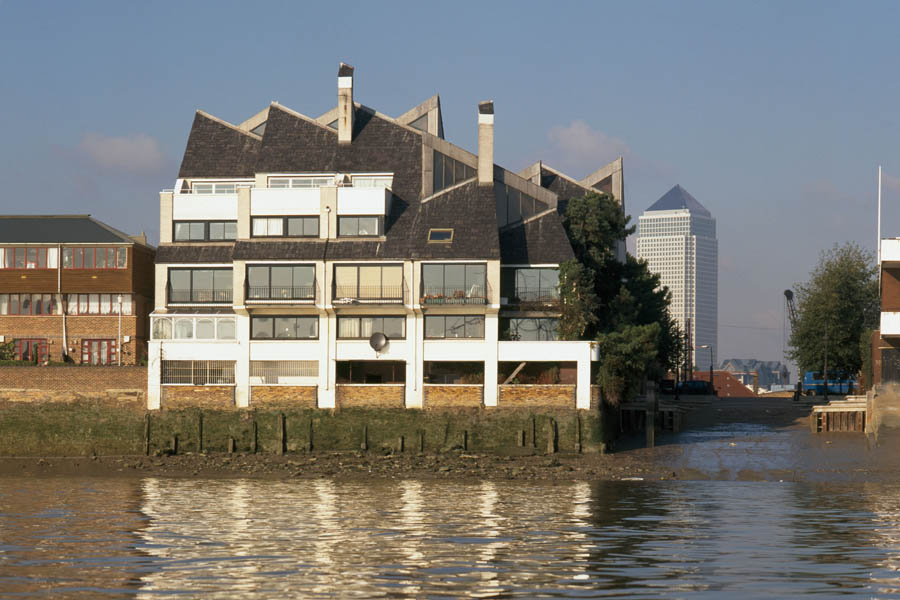 50-56 Ferry Street. Grade II listed by Historic England in 2021, under the direction of Michael Barraclough, architects Stout and Litchfield. The successful development sparked Michael's interest in the idea of self build for the area.
50-56 Ferry Street. Grade II listed by Historic England in 2021, under the direction of Michael Barraclough, architects Stout and Litchfield. The successful development sparked Michael's interest in the idea of self build for the area.
They choose the design of their houses within limits, the basic unit remaining the same while they were allowed to choose interesting variations. Their houses looked high-end and elegant, with white calcium silicate walls, slates covering the pitched roofs, mahogany window frames and often charming bow windows.
And they cost only £45,000 to build.
One of the delightful and little-known side effects of the building of the Machonochies Wharf houses was that they had a huge, positive effect on the riverside environment.
Land right on the river cost a lot to buy, a few yards back it was much cheaper. Michael was quite cunning and as a research doctor he was reasonably good at scientific jargon. He managed to convince the already nervous LDDC that to build on the actual riverside would have a dangerously destabilising effect on the piles supporting the riverbank. Seriously worried, the LDDC allowed the self- builders to go back at least 25 ft where Michael pointed out the price of land should be cheaper.
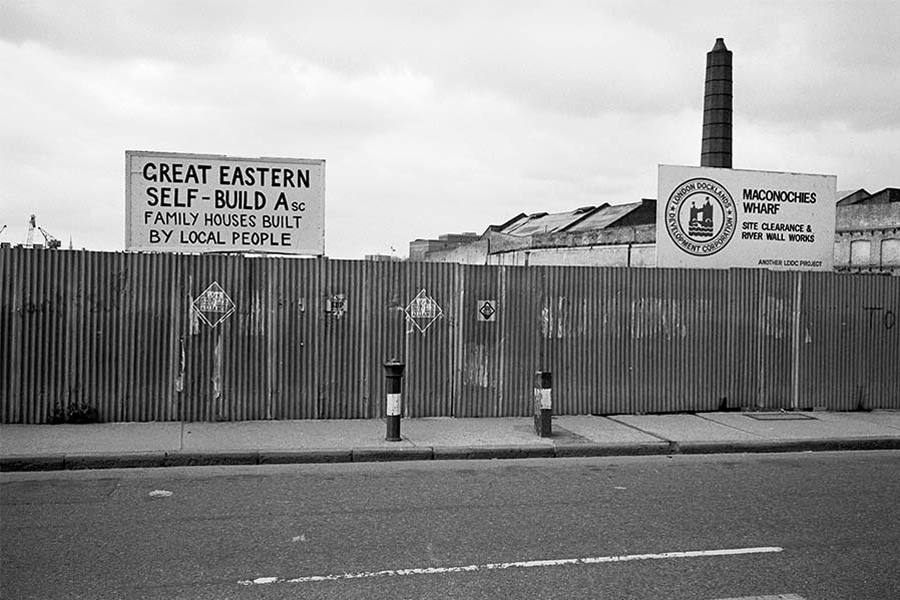 Early image, before the buildings took shape © Mike Seaborne
Early image, before the buildings took shape © Mike Seaborne
Later the wide width of the river walk thus created, had to be continued for the entire stretch of river making a lasting generous promenade enjoyed by walkers, bikers, children and of course dogs…
To this day the houses of Maconachies Wharf are admired and sought after. At the time many lined up to be the next self-builders. The sad thing is that the fragile state of the economy at that point meant banks were unwilling to support them and no more self-build houses were built.
